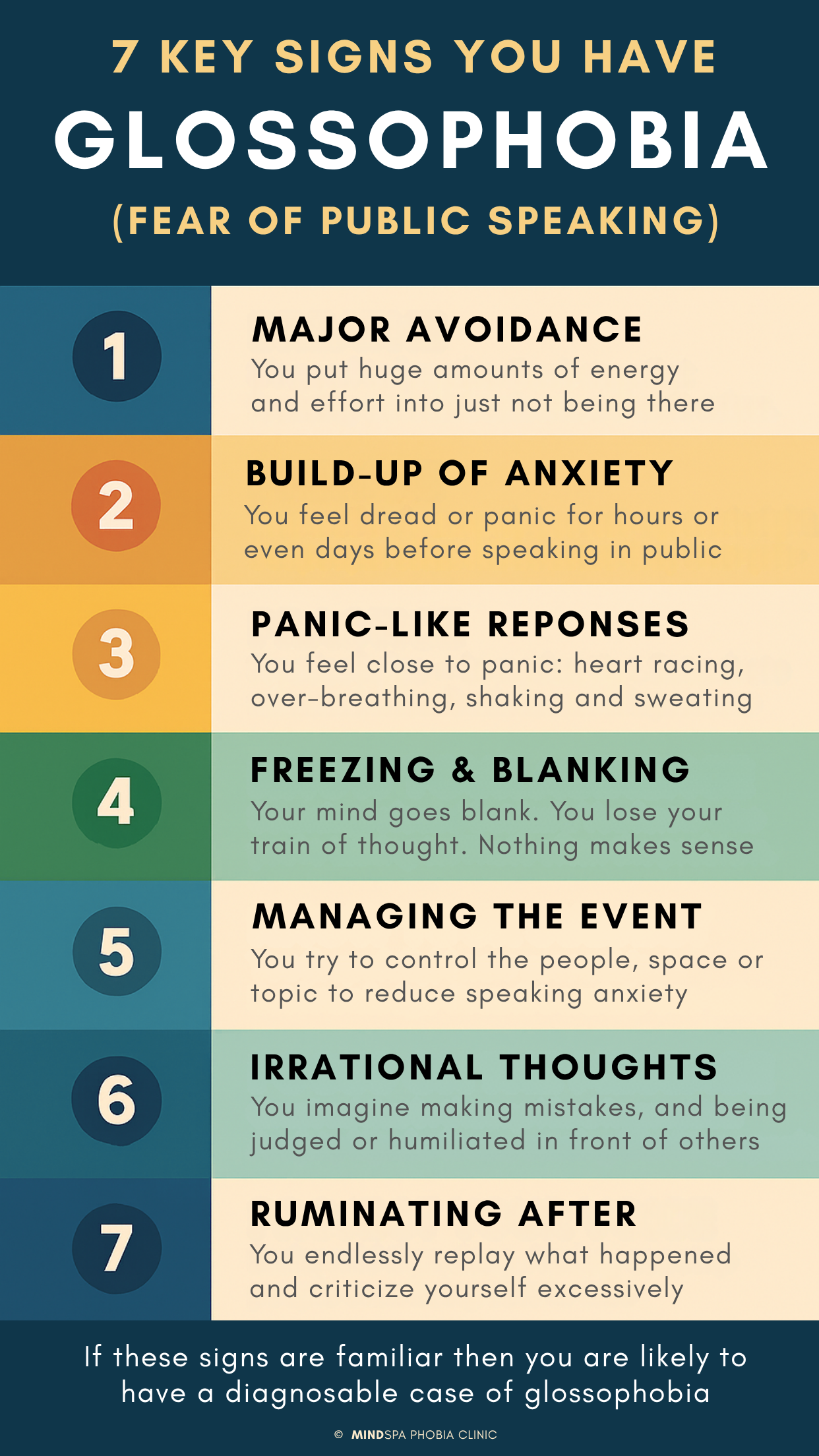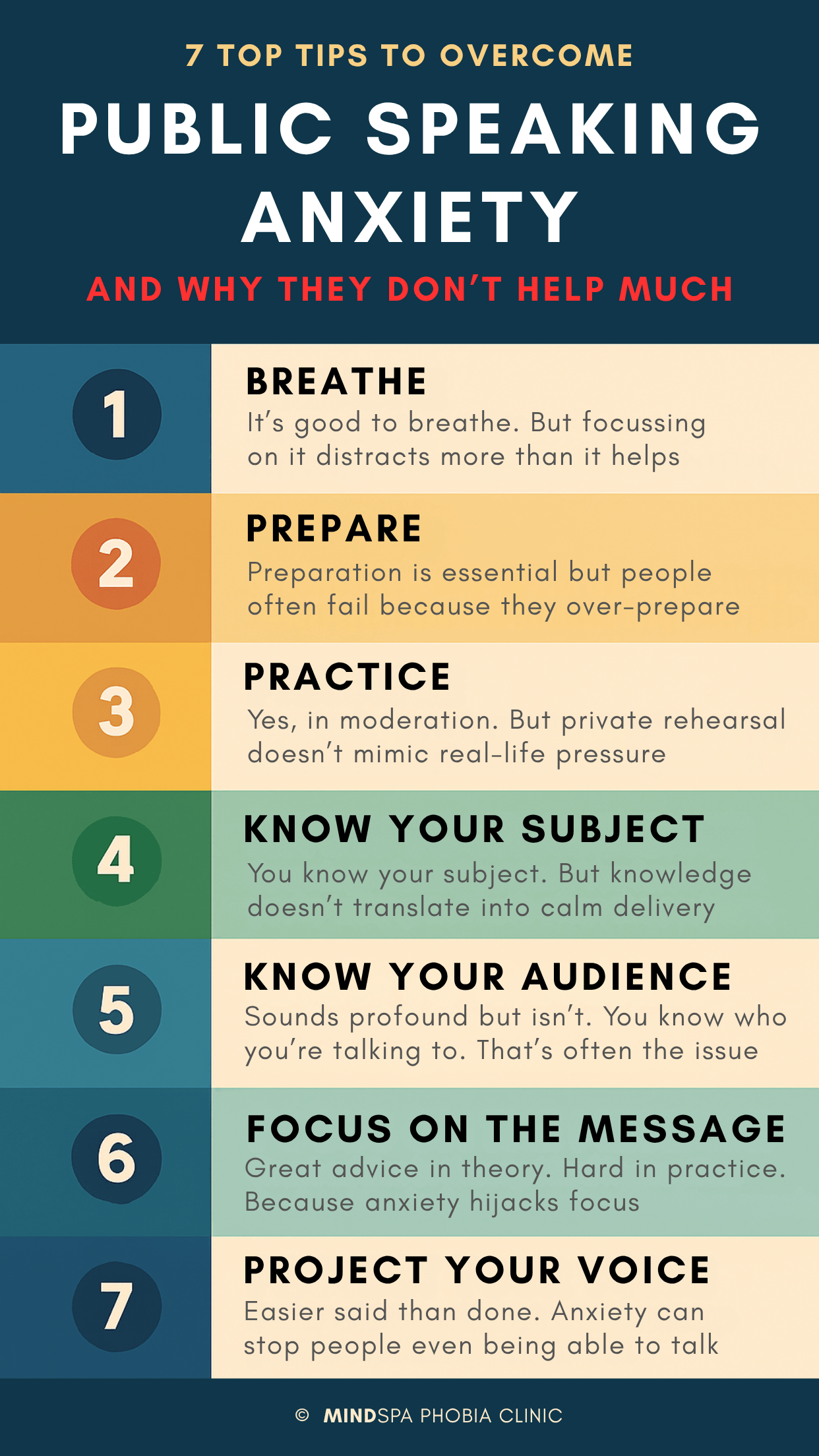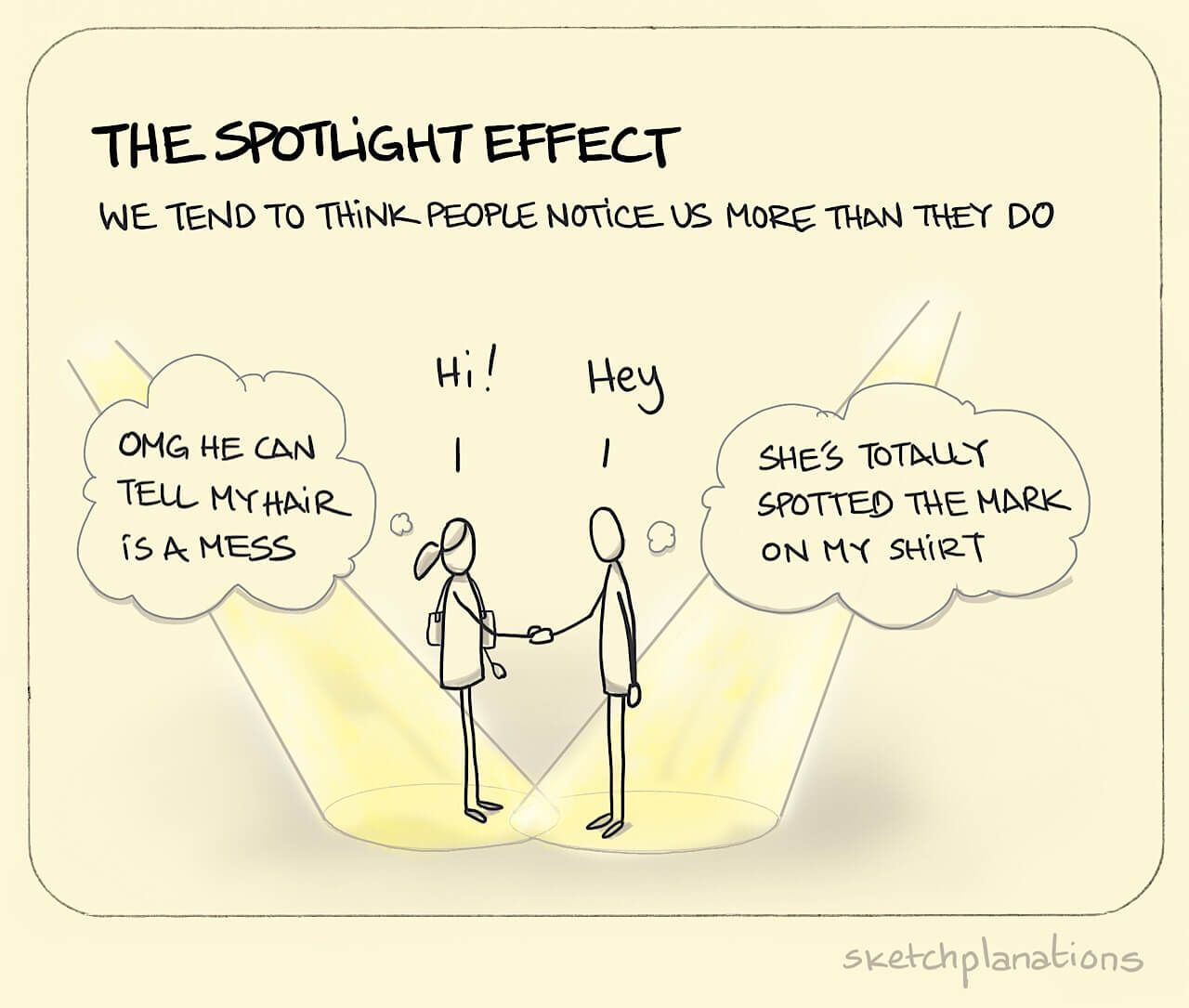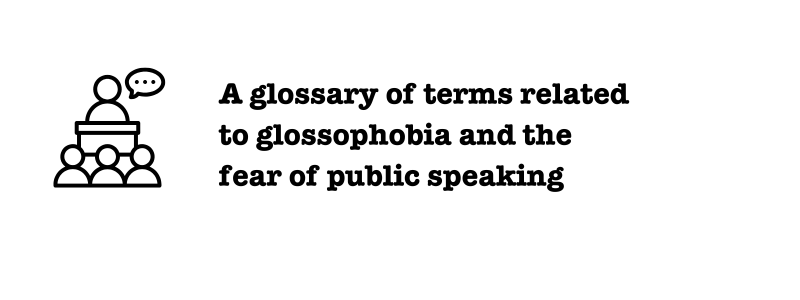5 Signs You Need Help with Glossophobia
If you suspect your public speaking anxiety might actually be glossophobia (a more extreme or limiting fear) here are 5 key signs that you may need help:
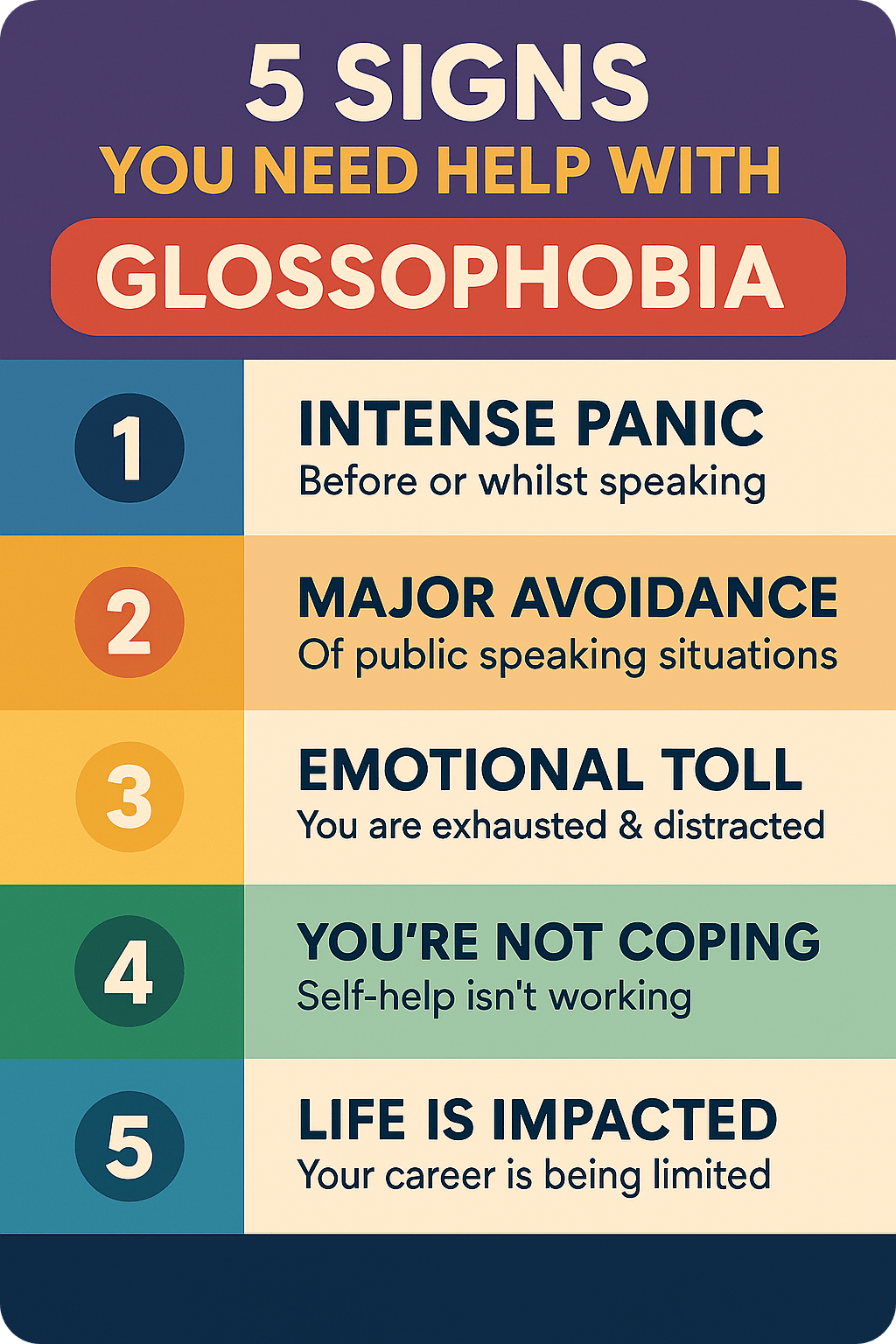
For many people, speaking in front of others sparks more than just nerves—it triggers glossophobia, the intense fear of public speaking. It doesn’t only appear on big stages; it can strike in meetings, interviews, classrooms or even casual group settings. What begins as a pounding heart and sweaty palms can quickly escalate into overwhelming dread, panic and avoidance.
Recognizing the signs of glossophobia – and identifying them early - is the first step toward overcoming it. Below are the most common indicators that your fear of public speaking has gone beyond natural anxiety and is interfering with your personal or professional growth.
1 Intense Panic
When faced with speaking in public (or even just thinking about it), you experience intense physical and psychological symptoms:
- Rapid heart rate, sweating, trembling, dry mouth
- Nausea, dizziness, muscle tension
- Intense fear, dread, self-criticism, or even nightmares about speaking
- “Freezing,” blanking, or cognitive overload during presentations
2 Avoidance of Speaking Opportunities
You go out of your way to skip presentations, meetings, or any event where you might have to talk in front of others—even when you’d otherwise want to participate. Sometimes you try to micromanage and manipulate people and situations to make the speaking event more comfortable. While avoidance brings temporary relief, it strengthens glossophobia over time.
3 Emotional Toll
You start feeling dread or panic hours or even days before you’re due to speak. The build-up alone can cause stress, insomnia, or a constant mental loop of “What if I mess up?”. This anticipatory anxiety drains mental energy and focus, leaving you too exhausted to enjoy or concentrate on other areas of life.
4 Self-Help Isn’t Working
Common strategies—over-preparing, hours of practice, deep breathing, positive affirmations, self-medicating with alcohol or drinking gallons of Rescue Remedy are just not helping. While these techniques may help mild nerves, they often fall short when trying to overcome the hardcore fear that glossophobia generates. If you’ve tried YouTube tutorials, books on public speaking, repeated exposure or even public speaking courses without much progress, it’s a sign your anxiety runs deeper than ordinary nervousness. When public speaking anxiety turns into white-knuckle fear then you need specialist therapy to truly break the cycle.
5 Life Is Impacted
Glossophobia is causing you to avoid situations where speaking is required. You might decline promotions, skip presentations, or hold back in meetings and classes. Over time, avoidance blocks career growth, reduces educational opportunities, and strains social connections. This ripple effect goes beyond public speaking anxiety—it can erode self-confidence, limit opportunities and even affect relationships.
If you notice most of these signs—especially if they’re recurring and interfering with daily life or career—it’s a strong indicator that professional intervention will help. With our powerful and effective Public Speaking Program you can break free from stage fright, overcome public speaking anxiety, and regain confidence in every speaking situation.

